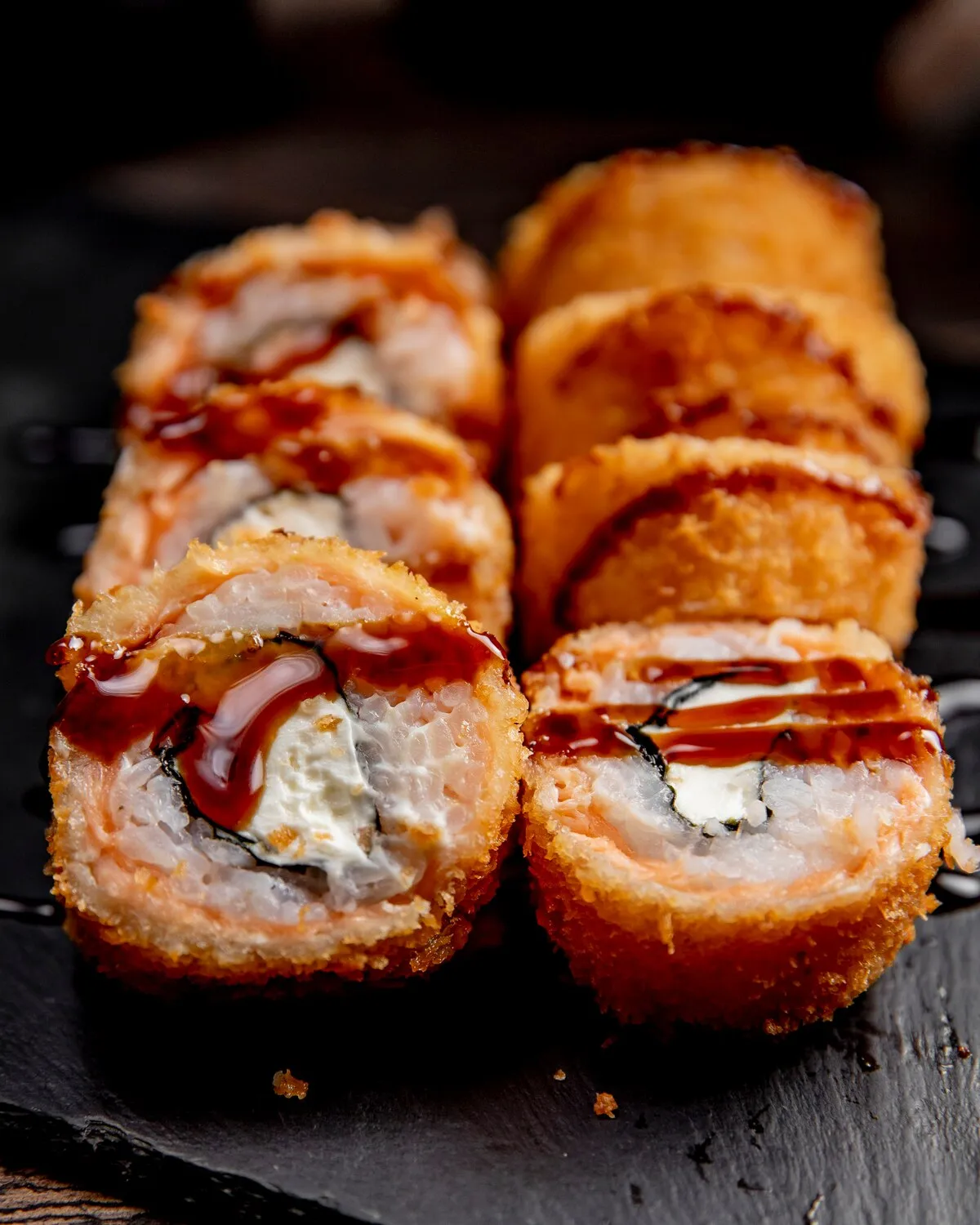
Hot Roll
Hot rolls are fried sushi rolls. Commonly filled with salmon and cream cheese.
Nutrition Facts
* The % Daily Value (DV) tells you how much a nutrient in a serving of food contributes to a daily diet. 2,000 calories a day is used for general nutrition advice.
The hot roll, a type of fried sushi, is a relatively modern invention, likely originating in the United States as a fusion of Japanese sushi techniques with American culinary preferences. It reflects the adaptation of sushi to suit Western palates, particularly the desire for cooked and/or deep-fried options.
The hot roll is often seen as a gateway sushi for those who are new to Japanese cuisine or hesitant to try raw fish. It represents the broader trend of Americanized sushi, catering to preferences for cooked ingredients and bolder flavors.
Fusion Cuisine
Hot rolls are a prime example of fusion cuisine, blending Japanese techniques with Western preferences and available ingredients. They demonstrate the evolution of sushi beyond traditional Japanese norms.
Accessibility
The cooked nature of hot rolls makes them more accessible to a wider audience, including those who may be wary of consuming raw seafood. This has contributed to the popularization of sushi in Western cultures.
The hot roll offers a combination of savory, creamy, and often slightly sweet flavors, with a satisfying contrast between the crispy exterior and the soft interior.
The primary flavors derive from the filling, typically featuring salmon, which provides a rich, oily taste, and cream cheese, contributing a tangy and creamy element. The nori seaweed wrapping adds a subtle umami flavor, while the rice offers a mild sweetness and a soft texture. Frying the roll in tempura batter introduces a crispy, savory coating. Dipping sauces like eel sauce (unagi sauce) or spicy mayonnaise can add further layers of sweetness, saltiness, and spice.
Temperature Control
Maintain a consistent oil temperature (around 350°F/175°C) for even cooking and crispiness. Too low, and the roll will absorb too much oil; too high, and the outside will burn before the inside is heated through.
Batter Consistency
Use a light and airy tempura batter to avoid a heavy, greasy crust. Ensure the batter is cold, as this helps to achieve a crisper texture.
Pre-Freezing
Slightly freezing the sushi roll before frying can help it hold its shape and prevent it from falling apart in the hot oil. However, be cautious not to freeze it completely solid.
Explore additional Sushi dishes and restaurants
Explore SushiDiscover top dining spots and culinary experiences in Petrópolis.
Explore PetrópolisLearn more about the food culture, restaurant scene, and culinary heritage of Brazil.
Explore Brazil